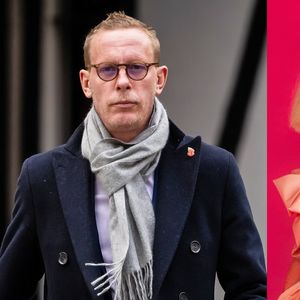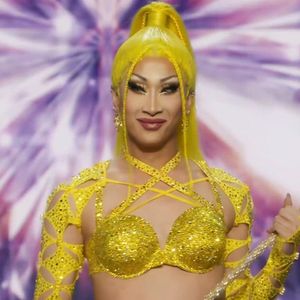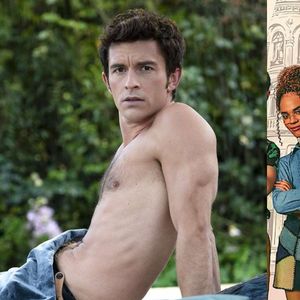Are you boycotting the 2014 Olympics in Sochi? Are you pouring your Russian vodka down the loo? Another way to show your support for Russian LGBTs is by remembering these wonderfully talented, beautiful, and iconoclastic figures from the country's history.

Above: Ivan the Terrible Showing His Treasury to Jerome Horsey by Alexander Litovchenko. Jerome Horsey was the ambassador of Queen Elizabeth I of Great Britain, and got to know Tsar Ivan IV fairly well during his time there. Behind Ivan can be seen Fyodor, his heir.
Ivan IV(The Terrible, 1530-1584, reigned from 1533)
First off, when we say "terrible" here, we imagine it more like: "Oh Muriel, you're terrible!" There is speculation that a more literal translation would be "formidable." A composer and a poet, Ivan was the first ruler to be crowned tsar of all Russia. In his final years as tsar he vaccilated between extremes. It was all party or all austerity. He married seven times, but what really seemed to keep his samovar brewing was men in female attire. One of the most viscious lieutenants of Ivan's political police, Feodor Basmanov, rose to power by performing seductive dances in women's clothes in Ivan's court. (Sources: Queerhistory.blogspot.com and Wikipedia)

Nikolai Gogol(1809-1852)
Gogol is a Ukrainian-born Russian humorist, dramatist, and novelist, whose novel Dead Souls, and whose short story "The Overcoat," are considered the foundations of the great 19th-century tradition of Russian realism. In The Sexual Labyrinth of Nikolai Gogol, author Simon Karlinsky posits that Gogol's "emotional orientation" was homosexual, and that understanding that is the key to much of his work. (Sources: New York Review of Books, Wikipedia)

Peter Tchaikovsky(1840 - 1893)
He wrote the most deleriously beautiful music ever: Romeo and Juliet, the 1812 Overture, his three ballets The Nutcracker, Swan Lake, The Sleeping Beauty, among many others. The history of Tchaikovsky's homosexuality was suppressed in Russia by the Soviets, and it has only recently become widely known in post-Soviet Russia. Tchaikovsky's letters and diaries, as well as the letters of his brother Modest, who was also gay, make clear his orientation. But as so often is the case, letting the facts speak for themselves about orientation is often denied and countered by censoring views. Some historians still consider evidence scant or non-existent. Many of Tchaikovsky's most intimate relationships were homosexual: Tchaikovsky's servant Aleksey Sofronov and his nephew, Vladimir "Bob" Davydov. Gay author E.M. Forster referenced Tchaikovsky and Davydov in his love story Maurice, written in 1913-14 and published in 1971: "...Tchaikovsky had fallen in love with his own nephew, and dedicated his masterpiece [Symphonie pathetique] to him." (Sources: Russiapedia.rt.com)

Above: Diaghilev with his nanny, painted by Leon Bakst
Sergei Diaghilev(1872-1929)
The legendary ballet impresario founded the Ballets Russes, a collaborative effort of the most talented artists, composers and dancers of the early 20th century. His orientation was fairly well known, as was his relationship with the dancer Vaslav Nijinsky. He moved dance away from the formal classicism of the 19th century to a modern freedom, and in doing so liberated the male dancer from his role as tripod for the ballerina to become a focus in his own right.
 At right: Igor Stravinsky, Diaghilev, and Serge Lifar
At right: Igor Stravinsky, Diaghilev, and Serge Lifar
A stellar pantheon of collaborators included Picasso, Jean Cocteau, Michel Fokine, Leon Bakst, George Balanchine, Igor Stravinsky, Matisse, Marie Laurencin, Georges Braque, and Coco Chanel, as well as his lovers Boris Kochno, Leonide Massine, and Serge Lifar.
Doing away with the lugubrious romantic works of the previous century like Swan Lake and Sleeping Beauty, Diaghilev created a repertoire of works that were not only more natural and modern, but also experimental and controversial exploring gender identity, homosexuality, and incest.
Picasso created cubist sets for Parade. Stravinsky's The Rite of Spring caused riots with its challenging rhythms. Nijinsky's masturbatory performance in L'apres-midi d'un faune (The Afternoon of a Faun) caused a scandal, as did his choreography for Jeux, a dance depicting a tennis game, that was a thinly veiled depiction of a three-way.
The Ballets Russes, ironically enough, never performed in Russia. They toured the globe attracting both the newly forming cafe society as well as the intellectual and bohemian crowd of the day. And of course, interspersed in all that strata were large numbers of gay men and women. The Ballets Russes became a symbol of the avant garde and international chic.

 Leon Samoilovitch Bakst (1866 - 1924)
Leon Samoilovitch Bakst (1866 - 1924)
Bakst was a Russian painter and scene and costume designer. An intimate in Sergei Diaghilev's circle, he designed exotic, richly coloured sets and costumes for the Ballets Russes. His most recognizable work is his sensual image of Nijinsky in his costume for L'apres-midi d'un faune (at top). Beginning in 1909, Bakst worked mostly as a stage-designer, designing sets for Greek tragedies, and, in 1908, he made a name for himself as a scene-painter with the Ballets Russes. He produced scenery for Cleopatra (1909), Scheherazade (1910), Carnaval (1910), Narcisse (1911), Le Spectre de la Rose (1911), L'apres-midi d'un faune (1912) and Daphnis et Chloe (1912). During this time, he lived in western Europe because, as a Jew, he did not have the right to live permanently outside the Pale of Settlement. (Sources: Wikipedia, GayforToday.blogspot.com)
 Above: Nazimova in her production of Oscar Wilde's
Above: Nazimova in her production of Oscar Wilde's Salome;
Right: As Hedda Gabler;
Bottom: Lady Gaga and NazimovaAlla Nazimova(1879 - 1945)
This revered Russian actress made it to the Great White Way, where she was discovered by Hollywood and became the prototype of the exotic screen vamp. After two husbands -- one a "lavender" marriage -- she converted her West Hollywood compound into a playground for the rich, famous, and sexually promiscuous. From then on it was women only. She bedded the famous, the powerful, and merely mercenary.
 She was born Miriam Edez Adelaida Leventon, but like many people with a hard-scrabble childhood, she reinvented herself many times over before she became a leading silent film star in Hollywood. With her first husband, flamboyant actor and producer Pavel Orlenev, she opened a Russian-language theater on the lower east side of New York. She quickly became extremely popular (a theater was named after her) and remained a major Broadway star for years, often acting in the plays of Henrik Ibsen and Anton Chekhov.
She was born Miriam Edez Adelaida Leventon, but like many people with a hard-scrabble childhood, she reinvented herself many times over before she became a leading silent film star in Hollywood. With her first husband, flamboyant actor and producer Pavel Orlenev, she opened a Russian-language theater on the lower east side of New York. She quickly became extremely popular (a theater was named after her) and remained a major Broadway star for years, often acting in the plays of Henrik Ibsen and Anton Chekhov.
Brought to Hollywood by Lewis Selznik, she began writing and producing her own extremely stylized and often daring films. Most notable was her production of Oscar Wilde's Salome with art direction and costumes by Valentino's wife, Natacha Rambova, with whom she is presumed to have had an affair. She had already bedded Valentino's first wife Jean Acker.
Nazimova's mansion, the Garden of Alla, was a hot spot on the corner of Sunset and Crescent Heights that hosted many of the wilder parties for the 1920s film folk. There were a series of villas and cabins, and it is said that once inside the "Garden" all lips were sealed as to who spent the night in whose bed. It was converted to apartments and a hotel in 1927, and Nazimova continued to live there in one of the villas.
Of those others Nazimova is confirmed to have been involved with romantically, the list includes actress Eva Le Gallienne, director Dorothy Arzner, writer Mercedes de Acosta, Oscar Wilde's niece Dolly Wilde, and actress Anna May Wong. Nazimova lived with her very patient, long-time companion Glesca Marshall from 1929 until her death in 1945.

 Sophia Parnok(1885 - 1933)
Sophia Parnok(1885 - 1933)
Parnok discovered her heart's true nature early in life, much to her father's chagrin. At 20, she bolted to Geneva with her lover, only to end up back with her family when the young couple ran out of money. Her next escape was a marriage blanche with a fellow poet, but that did not last long, and soon Parnok was off on another adventure and romance with with fellow poet Marina Tsvetaeva. At the end of their relationship, she published her first book of verse, Poems -- some of the first Russian poetry to deal with lesbianism. There were more lovers and more poems, and finally she met Olga Tsuberbiller (pictured with her at right). She lived with Tsuberbiller for the rest of her life. There were a few affairs of course; after all, she was a Russian, lesbian poet. (Source: Queercult.com)
From "Dreams," May 1924
Only in dreams, with a broken off moan,
so as not to die in her sleep,
on such a mellifluous wave,
above this sky-blue drowning,
her whole chest heaving freely
with breath, my soul is bobbing.
 Felix Felixovich Yusupov Jr.(1886 - 1967)
Felix Felixovich Yusupov Jr.(1886 - 1967)
Yusupov's life has three or four novels-worth of adventure. Duels, incarcerations, extreme wealth, and forced exile. He is also one of the two men who murdered Rasputin, the mystic who was an advisor the the Romanovs, the Imperial Russian family.
 At right, Yusupov's estate.
At right, Yusupov's estate.
Yusupov was bisexual and led a flamboyant life. He describes in his autobiography often spending time with Gypsy bands and adopting female clothing. He married Princess Irina of Russia, the tsar's niece, on February 22, 1914 in the Anichkov Palace in Saint Petersburg. The marriage was said to be extremely well matched and very happy. After murdering Rasputin, and after the breakout of WWI, Yusupov and his wife went into exile, but not without first stopping at their palace to grab some jewelry and a few Rembrandts to tide them over. (Sources: Wikipedia, AndrejKoymasky.com)

Vaslav Nijinsky(1889-1950)
Nijinsky was born into a dancing family. Both his parents were senior dancers with Setov opera company. At nine he joined the Imperial Ballet School in St. Petersburg, the most prestigious and powerful dance school in the world. In 1909 he joined the Ballets Russes, a new ballet company started by Sergei Diaghilev (see previous) which planned to present Russian ballets in Paris, where productions of the quality staged by the Imperial ballet simply did not exist.

Nijinsky became the company's star male dancer and Diaghilev's lover. Nijinsky's astounding talent and Diaghelev's star-making machine resulted in international fame for Nijinsky. His body was legendary, with short, powerful legs that performed amazing leaps, and long slender arms that captured a more feminine grace.

 Above: Nijinsky in Chinese costume. At left Nijinsky on the Lido by Leon Bakst
Above: Nijinsky in Chinese costume. At left Nijinsky on the Lido by Leon Bakst
In 1912 Nijinsky began choreographing his own ballets, including L'apres-midi d'un faune (1912) and Jeux (1913). At the premier of Le Sacre du Printemps (1913) fights broke out in the audience out of shock and dismay at both Nijinsky's choreography and Igor Stravinsky's music. His most enduring moment was the scandal created as he performed his role in L'apres-midi d'un faune (The Afternoon of a Faun), which culminated in self-pleasure.
Nijinsky married Hungarian Romola de Pulszky in 1913 while on tour with the company in South America. She had stalked Nijinsky. The marriage was a surprise as neither spoke the same language, but Nijinsky was already showing signs of mental deterioration that was to continue. Diaghilev immediately dismissed Nijinsky from the company. He was interned in Hungary during World War I under house arrest until 1916, finally being allowed to leave after intervention by Diaghilev, who wanted him to perform in an American tour.
Nijinsky became increasingly mentally unstable. After a tour of South America in 1917 the family settled in Switzerland, where his mental condition continued to deteriorate. The rest of his life was spent suffering from mental illness which incapacitated him beyond the ability to dance again in public. For a close-up look at a mind gone mad, read his diary, written in the last six weeks before he was committed to an asylum.
(Source: American Ballet Theatre, Wikipedia)

Erte(1892 - 1990)
Romain de Tirtoff was a Russian-born French artist and designer known by the pseudonym Erte, the French pronunciation of his initials, R.T. He was a diversely talented artist and designer who flourished in an array of fields, including fashion, jewelery, graphic arts, costume and set design for film, theater, and opera, and interior decor in a career that spanned nearly the entire century.
 Early in life Erte was attracted to the theater, and at one point wavered between becoming a dancer or an artist. But eventually, he recalled years later, ''I came to the conclusion that I could live without dancing but could not give up my passion for painting and design.''
Early in life Erte was attracted to the theater, and at one point wavered between becoming a dancer or an artist. But eventually, he recalled years later, ''I came to the conclusion that I could live without dancing but could not give up my passion for painting and design.''
According to The New York Times, A major turning point in his career came in 1965, when he met Eric and Salome Estorick of Seven Arts Ltd. Seven Arts remained the exclusive agent for Erte's work until his death. When the Estoricks organized an exhibition of 170 of his works in New York in 1967, the Metropolitan Museum of Art bought the entire collection.
 His work is instantly recognizable and hugely influential on many fashion artists and costume designers, like Bob Mackie. Nazimov's designs for her production of Salome obviously were inspired by Erte's work.
His work is instantly recognizable and hugely influential on many fashion artists and costume designers, like Bob Mackie. Nazimov's designs for her production of Salome obviously were inspired by Erte's work.
If you lived through the '70s and '80s, you saw an incredible revival of a still-living artist whose control over his meticulously rendered images never wavered. He worked up until the last two weeks of his life at 97. He was fond of the pubilicty he had from his revival, and made many appearances in his celery- and lavender-colored suits with scarves and hats adding extra glamour.
Of his hallucinatory and decadent imagination he said, "I'm in a different world, a dream world that invites oblivion. People take drugs to achieve such freedom from their daily cares. I've never taken drugs. I've never needed them."

Sources: Erte.com, Wikipedia, The New York Times
 Leonide Massine(1896 - 1979)
Leonide Massine(1896 - 1979)
This bisexual superstar became the next big thing after Nijinsky's emotional defection from Daighilev and the Ballet Russe. Not only was he immediately filling all the major roles, but he was Diaghilev's bedmate as well. Massine was undisputably Europe's leading dancer and choreographer of the 1920's and 1930's. Massine choreographed over 100 ballets, among them works that are landmarks in 20th century dance.
At left: Massine by Leon Bakst
Massine's collaborators list reads like a compendium of all arts and culture in the first half of the 20th Century: Picasso, Braque, Matisse, Bakst, Gontcharova, Larionov, Derain, the Delaunays, Chagall, Miro, Dali, Stravinsky, Satie, Prokofiev, Cocteau, Noel Coward, Martha Graham, and Moira Shearer in the cult ballet classic film The Red Shoes.
At right: Diaghilev and Massine
In his youth, Massine was the protege and lover of Diaghilev, and in later life he enjoyed numerous love affairs with beautiful women, and had four wives. His first two wives, Vera Savina (nee Vera Clark) and Eugenia Delarova, were both ballet dancers. With his third wife, Tatiana Orlova, he had two children -- a son, Lorca, and a daughter, Tatiania. He and Orlova divorced in 1968. He subsequently married Hannelore Holtwick, with whom he had two sons, Peter and Theodor, and made his home in Borken, Germany, where he died in 1979.
(Sources: Massine-Ballet.com, Wikipedia)
 Sergei Eisenstein(1898-1948)
Sergei Eisenstein(1898-1948)Though he only made seven films in his career, his groundbreaking use of montage and symbolism has influenced generations of filmmakers since. He began as a stage-set designer, then director. He moved film away from a static Victorian linear narrative to a spontaneous explosion of images, utilizing radical angles and relationships in the picture frame, often so chaotic that the audience was baffled.
Eisenstein's personal life was also chaotic. He married twice in response to political pressure, but his marriages were never consummated. His unexpurgated diaries, published as Immortal Memories, are filled with accounts of his infatuations with many young men, including his assistant, Grigori Alexandrov.
Often his infatuations were with young heterosexual men whom he would mentor (as in the case of Alexandrov). His drawings, exhibited during the centenary of his birth, include many illustrations of homosexual activity.

Above: A still from Ivan the Terrible

Above: A still from The Battleship Potemkin
(Sources: IMDb, GayforToday.blogspot.com)


 Pavel Tchelitchew(1898 - 1957)
Pavel Tchelitchew(1898 - 1957)
Surrealist artist Pavel Tchelitchew was favored by the social set. His chic artwork was of the moment, but elegant. His young lover Charles Henri Ford (pictured, top, with Tchelitchew at left, by Cecil Beaton) was a poet and one of the editors of the surrealist magazine View. His most significant work is the painting Hide and Seek, painted in 1940-42, and currently owned by the Museum of Modern Art in New York City.
His crowd included avant-garde siblings the Sitwells, Cecil Beaton, Gertrude Stein, and many other iconic culture movers of the century. As his art moved toward neo-romaticism, he expanded his craft into stage design for Diaghilev's Ballet Russe and others.
For some delightfully NSFW artwork (a sample above right), check out David Leddick's wonderful book The Homoerotic Art of Pavel Tchelitchev.

Above: Hide and Seek
(Sources: Wikipedia, ElysiumPress.com)
 Above:
Above: After the Battle,
1944 Aleksandr Aleksandrovich Deineka
Aleksandr Aleksandrovich Deineka (1899 - 1969)
Deineka was a Soviet Russian painter, graphic artist, and sculptor, regarded as one of the most important Russian modernist figurative painters of the first half of the 20th century. Gay? Bisexual? Who is to say? We include his art here for its idealistic view of the male athletic form, and as an homage to the athletes that intend to compete in the Sochi 2014 Winter Olympics.
Deineka was born in Kursk to a railroader family. He was educated at Kharkov Art College. His youth was spent -- as was many of his contemporaries -- devoted to events around the revolution. In 1918 he worked as the photographer in Criminal Investigation Department, managed a section of the Art of Regional Educational Department, designed campaigns, and became involved in the defense of Kursk. In 1919-1920, Deineka was in the army where he managed an art studio in Kursk Political Department.

Sources: Wikipedia, Deineka.info

 Boris Kochno(1904 -- 1990)
Boris Kochno(1904 -- 1990)
In 1920, Kochno became Sergei Diaghilev's secretary, librettist, and eventually, his main collaborator. They were also lovers until Diaghilev's death in 1929 at 57. Kochno was there to witness the collaboration of many of the great artists of the 20th century, as well as befriend them and bed them, including an affair with Cole Porter in 1925, with whom he carried on a lengthy correspondence.
With Diaghilev, at left.
After Diaghilev's death he and dancer/choreographer Serge Lifar tried to continue the Ballets Russes, but to no avail. Later he worked as the Monte Carlo ballet director, where he became an influential figure in post-WWII French ballet. At the end of WWII, Kochno entered into collaboration with Roland Petit and Christian Berard, and they formed the Ballets des Champs-Elysees.
His books about Diaghilev and his good friend Berard are full of art and gossip of the European bohemian crowd as well as its upper crust.

Above: The creative team of Cotillon (1932) (seated) librettist Boris Kochno, Rene Blum, fellow impresario Colonel de Basil, choreographer George Balanchine (standing) set designer Christian Berard, rehearsal director Serge Grigoriev.
Sources: Wikipedia, Gayfortoday.blogspot.com

Above: Lifar by George Hoyingen-Huene, 1927
 Serge Lifar(1905 - 1986)
Serge Lifar(1905 - 1986)
By now, in popular dance culture, it could be assumed that the road to stardom involved a trek across the sheets of Sergei Diaghilev's bed. The very ambitious Lifar was only too happy to exploit his own good looks and charm on Diaghilev, Misia Sert, and Coco Chanel to mention but a few.
At left: Lifar with Diaghilev
In 1924, his strategies came to fruition as he became one of Diaghilev's favorites. As a result, he was cast in attention-getting roles and was groomed as a premier dancer and choreographer.
In a frenzy of fame and acclaim, Lifar kept taking so much that even the self-promoting Diaghilev hit his limit. But Lifar's talent had now begun to match his persistence, and he became indispensable as a featured dancer.

After Diaghilev's death he was engaged as the ballet master and director at the Paris Opera Ballet, where he remained in charge, with one hiccup of scandal, until 1957. While with the Paris Opera, Lifar attempted to carry on in the Ballet Russe style, using male dancers in featured positions, and using stellar choreographers such as Balanchine, Massine, and Frederick Ashton.
His brush with scandal: His open socializing with the German High Command during the Occupation of Paris, he claimed, was related to his work as an undercover agent. Although the appearance of collaboration led to Lifar's "banishment for life" from the Paris Opera Ballet in 1944, he was welcomed back by 1947.
Source: glbtq.com

Above: Nureyev with Rosella Hightower in 1962
Rudolf Nureyev(1938-1993)
And finally, a ballet dancer who did not find stardom in Diaghilev's bed! The Russian defector and dance megastar's life has had an enormous effect on 20th century dance and branches out into other arts and media as well. How many people can say they danced with Dame Margot Fonteyn and Miss Piggy?
Within a week after Nureyev defected while on tour in France, he was signed up by the Grand Ballet du Marquis de Cuevas, and was performing The Sleeping Beauty. On a tour of Denmark he met Erik Bruhn, soloist at the Royal Danish Ballet, who became his lover in a volatile long-term partnership until Bruhn's death in 1986.
In 1983, Nureyev was appointed director of the Paris Opera Ballet, where, as well as directing, he continued to dance and to promote younger dancers.

Above: Princess Grace of Monaco, Nureyev, and Dame Margot Fonteyn
He socialized with Gore Vidal, Freddie Mercury, Jacqueline Kennedy Onassis, Mick Jagger, Liza Minnelli, Andy Warhol, and Lee Radziwill -- while maintaining he had no patience for celebrities.
Stories of Nureyev's adventurous sex life were rife. He was spotted at the Anvil, the infamous New York bar and sex venue, and soon stories popped up everywhere regarding his exploits. The dancer tested positive for HIV in 1984. In the summer of 1991, he began to decline and entered the final phase of the disease in the spring of 1992. He worked almost up to the very end in November of 1992, conducting, choreographing and making appearances to receive awards, including France's highest cultural award, the Commandeur de l'Ordre des Arts et des Lettres.

Above: Nureyev in 1991
Source: Wikipedia
 Michael Lucas(b. 1972)
Michael Lucas(b. 1972)
Yup. That Michael Lucas.
Born in Moscow, he was raised in a secular Jewish family. In 1994, after earning a law degree from Moscow State Law Academy, Lucas briefly owned and operated a travel agency until 1995. He left Russia for Munich, Germany, then settled in France for the next two years. In 1997, Lucas moved to New York City.
He started his porn career in Germany with straight films, but while in France, he worked with the influential director Jean-Daniel Cadinot in his first gay films, and then went on to become a Falcon exclusive. He now has his own successful production company in New York.
As a columnist for Out, The Advocate,Huffington Post and Pink News, his reputation is controversial and his writing outspoken. Speaking regularly at universities such as Stanford, Yale, and Oxford, he discusses social, political, and sexual issues. He has been on the cover of hundreds of magazines worldwide and has been profiled in many mainstream publications ranging from New York Magazine to The New Republic.
In 2009, he became a citizen of Israel, denouncing his Russian citizenship in 2010 over Russian homophobia and anti-Semitism. (Sources: MichaelLucas.com, Wikipedia)

Above: Tattoos Graffiti, St. Peterburg, 2004 (self-portrait)
Slava Mogutin(b. 1974)
Mogutin's brash, sexy, and gritty art and photography are at the core of the Downtown scene in New York. Born Yaroslav Yurievich Mogutin in the industrial city of Kemerovo, Siberia, he left his family at age 14 and moved to Moscow, where he began working as a journalist and editor. Mogutin dealt in controversy and defied authority so vehemently that by age 21, he was charged with "open and deliberate contempt for generally accepted moral norms," "malicious hooliganism with exceptional cynicism and extreme insolence," "inflaming social, national, and religious division," "propaganda of brutal violence, psychic pathology, and sexual perversions." So, yes. A bad boy.
In 1995, Mogutin was granted political asylum in the U.S. with the support of Amnesty International and PEN American Center. Mogutin's photography and multimedia work have been exhibited internationally, including MoMA PS1 and Museum of Arts and Design in New York; Yerba Buena Center for the Arts in San Francisco; The Pacific Design Center in L.A.; Station Museum of Contemporary Art in Houston; Moscow Museum of Modern Art; Australian Centre for Photography in Sydney; Witte de With Center for Contemporary Art in Rotterdam; Overgaden Institute of Contemporary Art in Copenhagen; Estonian KUMU Art Museum in Tallinn; Museo de Arte Contemporaneo de Castilla y Leon (MUSAC) in Spain; and The Haifa Museum of Art in Israel. His work has been featured in a wide range of publications, including i-D, Flash Art, Modern Painters, Visionaire, L'Uomo Vogue, Stern, The New York Times, and The Huffington Post. He is a regular contributor to Whitewall, Vice, Flaunt, and The Stranger.
Mogutin is the author of two hardcover monographs of photography, Lost Boys and NYC Go-Go. In 2004, together with his partner and collaborator Brian Kenny, Mogutin co-founded SUPERM, a collaborative art project responsible for site-specific gallery and museum shows in the U.S. and across Europe. (Source: Slavamogutin.com)

Above: Ilya (Feet), Moscow, 2001, from the Lost Boys Series
The latest wave of Russians on the cutting edge are making their statements -- in spite of oppression from the mother country -- in photography, publishing and music, all with a focus on activism.

Alexander Kargaltsev
Alexander Kargaltsev's photographic project "Asylum" explores the lives of gay men who fled Russia for the United States due to the violence and hatred they have encountered in their motherland.
Kargaltsev's portraits expose the dire situation of the LGBT community in Russia. They contain a poignant message of hope for a life free of fear in the New World. The models, in their nakedness, reveal their courage in shedding many layers of fear, emerging from their harrowing past, bare and vulnerable, yet proud.
For more on this previous exhibit: Advocate.com and Kargaltsev's website, Kargaltsev.com

 Agens editor Milena Chernyavskaya
Agens editor Milena Chernyavskaya
Agens, which translates from Latin to mean "driving force," describes itself as "A Magazine About Women for Women," and carries a disclaimer warning that the magazine is only for those aged 18 and older. RIA Novosti reports the magazine's claim that it is the only printed, glossy publication for lesbians in the country, and the magazine's editor in chief says it intends to help balance the lack of information available to Russia's LGBT community.
"The LGBT community has to deal with an information blackout," said Milena Chernyavska, the editor in chief and a graduate of Moscow State University's journalism program. "Russian gay men and lesbians don't know each other and think that they cannot be happy, because everyone around them abuses them."

Above: Some of the rotating members of Pussy Riot
Pussy Riot
Pussy Riot is a Russian feminist punk rock protest group based in Moscow. Founded in August 2011, it has a variable membership of approximately 11, women ranging in age from about 20 to 33, who wear brightly colored balaclavas and use only nicknames during interviews. They stage unauthorized, provocative guerrilla performances in unusual public locations, which are edited into music videos and posted on the Internet. Their lyrical themes include feminism, LGBT rights, opposition to the policies of Russian President Vladimir Putin, whom they regard as a dictator, and links between the leadership of the Russian Orthodox Church and Putin.

In October 2012 two members of Pussy Riot, Maria Alyokhina (back left) and Nadezhda Tolokonnikova (back center) were jailed and sentenced to serve two years in a prison camp. And as late at this month, they were still denied parole. According to the New York Times, Nadezhda Tolokonnikova was told by a court in Saransk that she had not sufficiently repented for her act of "hooliganism" in performing at a Moscow Orthodox cathedral last year. Maria Alyokhina received similar news from a court in Perm. Both are being held in prisons near their courts, and are not expected to be released until next year. )Source: Wikipedia, Getty Images, and TheNew York Times.)
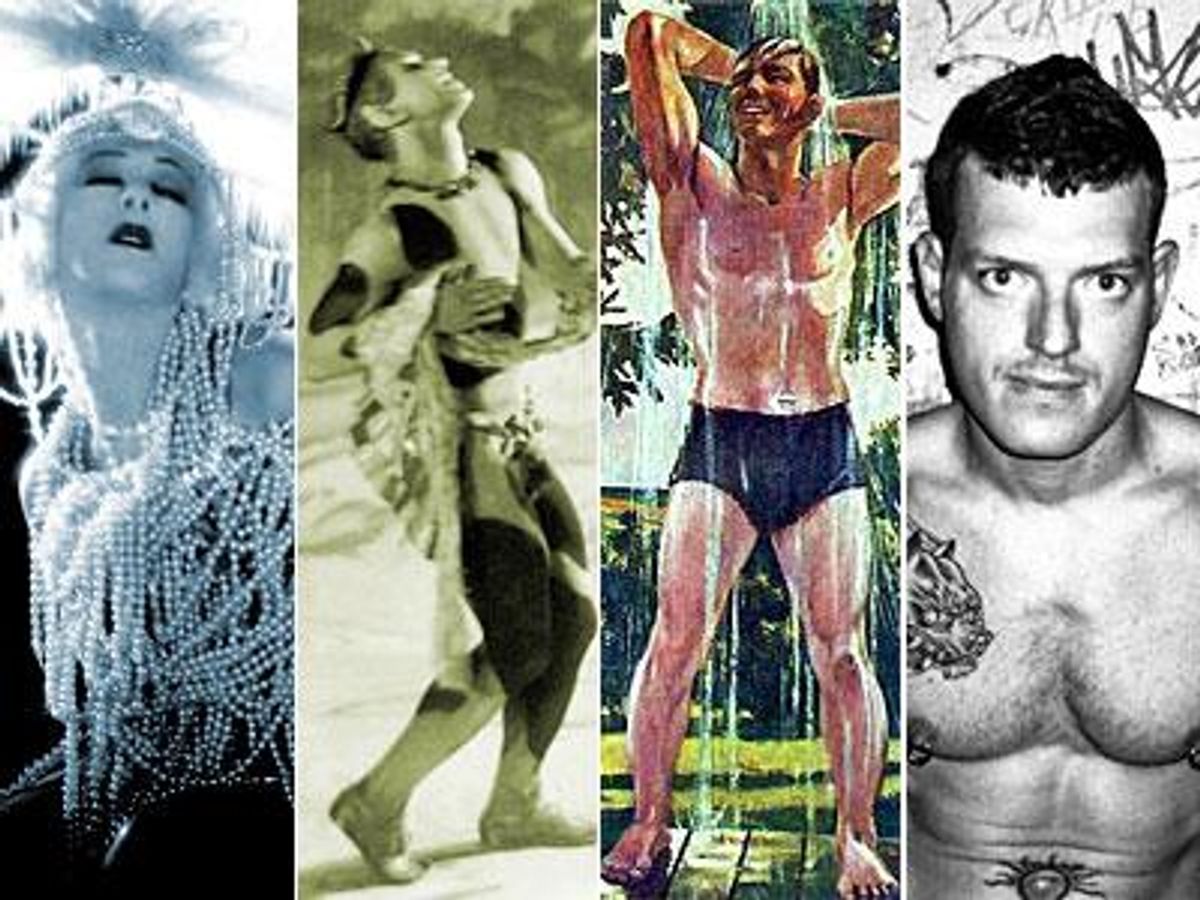





 At right: Igor Stravinsky, Diaghilev, and Serge Lifar
At right: Igor Stravinsky, Diaghilev, and Serge Lifar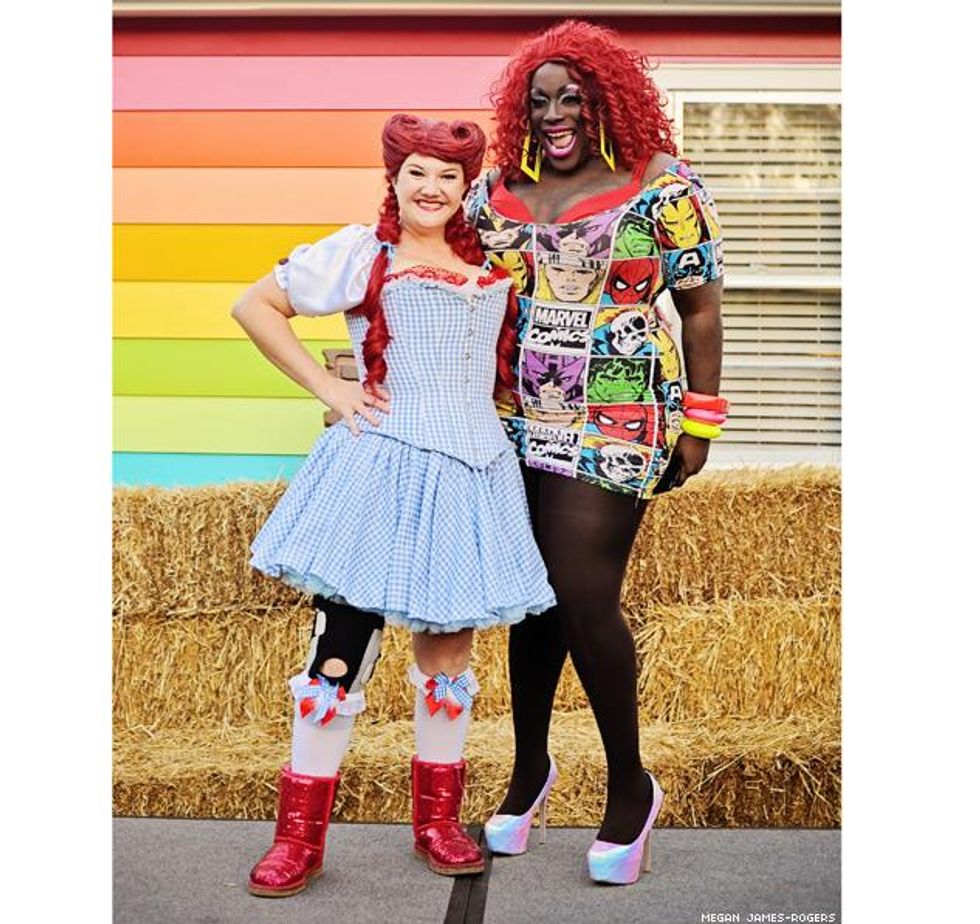
 Leon Samoilovitch Bakst (1866 - 1924)
Leon Samoilovitch Bakst (1866 - 1924)

 She was born Miriam Edez Adelaida Leventon, but like many people with a hard-scrabble childhood, she reinvented herself many times over before she became a leading silent film star in Hollywood. With her first husband, flamboyant actor and producer Pavel Orlenev, she opened a Russian-language theater on the lower east side of New York. She quickly became extremely popular (a theater was named after her) and remained a major Broadway star for years, often acting in the plays of Henrik Ibsen and Anton Chekhov.
She was born Miriam Edez Adelaida Leventon, but like many people with a hard-scrabble childhood, she reinvented herself many times over before she became a leading silent film star in Hollywood. With her first husband, flamboyant actor and producer Pavel Orlenev, she opened a Russian-language theater on the lower east side of New York. She quickly became extremely popular (a theater was named after her) and remained a major Broadway star for years, often acting in the plays of Henrik Ibsen and Anton Chekhov.
 Sophia Parnok(1885 - 1933)
Sophia Parnok(1885 - 1933) Felix Felixovich Yusupov Jr.(1886 - 1967)
Felix Felixovich Yusupov Jr.(1886 - 1967) At right, Yusupov's estate.
At right, Yusupov's estate.


 Above: Nijinsky in Chinese costume. At left Nijinsky on the Lido by Leon Bakst
Above: Nijinsky in Chinese costume. At left Nijinsky on the Lido by Leon Bakst
 Early in life Erte was attracted to the theater, and at one point wavered between becoming a dancer or an artist. But eventually, he recalled years later, ''I came to the conclusion that I could live without dancing but could not give up my passion for painting and design.''
Early in life Erte was attracted to the theater, and at one point wavered between becoming a dancer or an artist. But eventually, he recalled years later, ''I came to the conclusion that I could live without dancing but could not give up my passion for painting and design.'' His work is instantly recognizable and hugely influential on many fashion artists and costume designers, like Bob Mackie. Nazimov's designs for her production of Salome obviously were inspired by Erte's work.
His work is instantly recognizable and hugely influential on many fashion artists and costume designers, like Bob Mackie. Nazimov's designs for her production of Salome obviously were inspired by Erte's work.
 Leonide Massine(1896 - 1979)
Leonide Massine(1896 - 1979)
 Sergei Eisenstein(1898-1948)
Sergei Eisenstein(1898-1948)



 Pavel Tchelitchew(1898 - 1957)
Pavel Tchelitchew(1898 - 1957)

 Aleksandr Aleksandrovich Deineka (1899 - 1969)
Aleksandr Aleksandrovich Deineka (1899 - 1969)

 Boris Kochno(1904 -- 1990)
Boris Kochno(1904 -- 1990)

 Serge Lifar(1905 - 1986)
Serge Lifar(1905 - 1986)



 Michael Lucas(b. 1972)
Michael Lucas(b. 1972)



 Agens editor Milena Chernyavskaya
Agens editor Milena Chernyavskaya



































